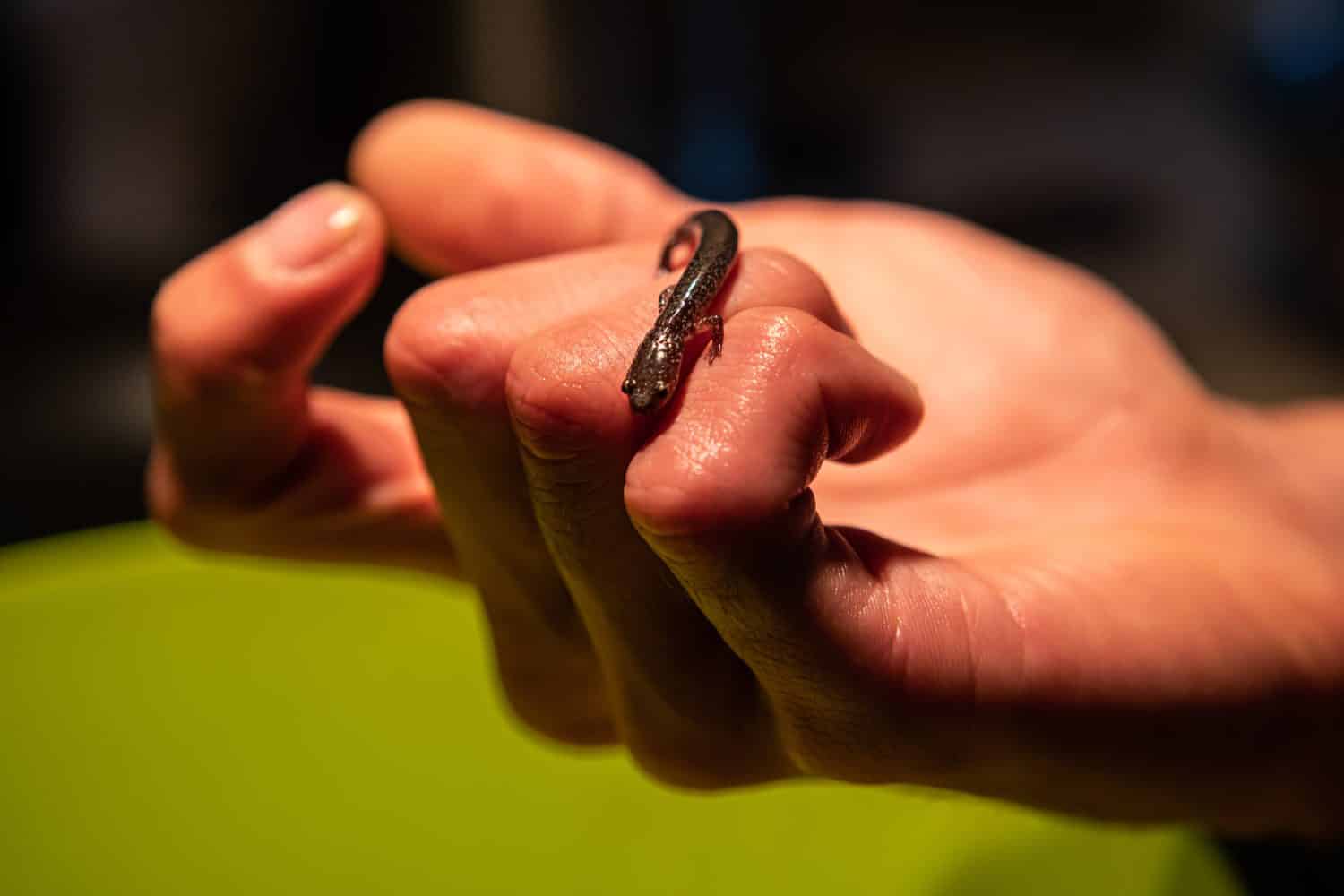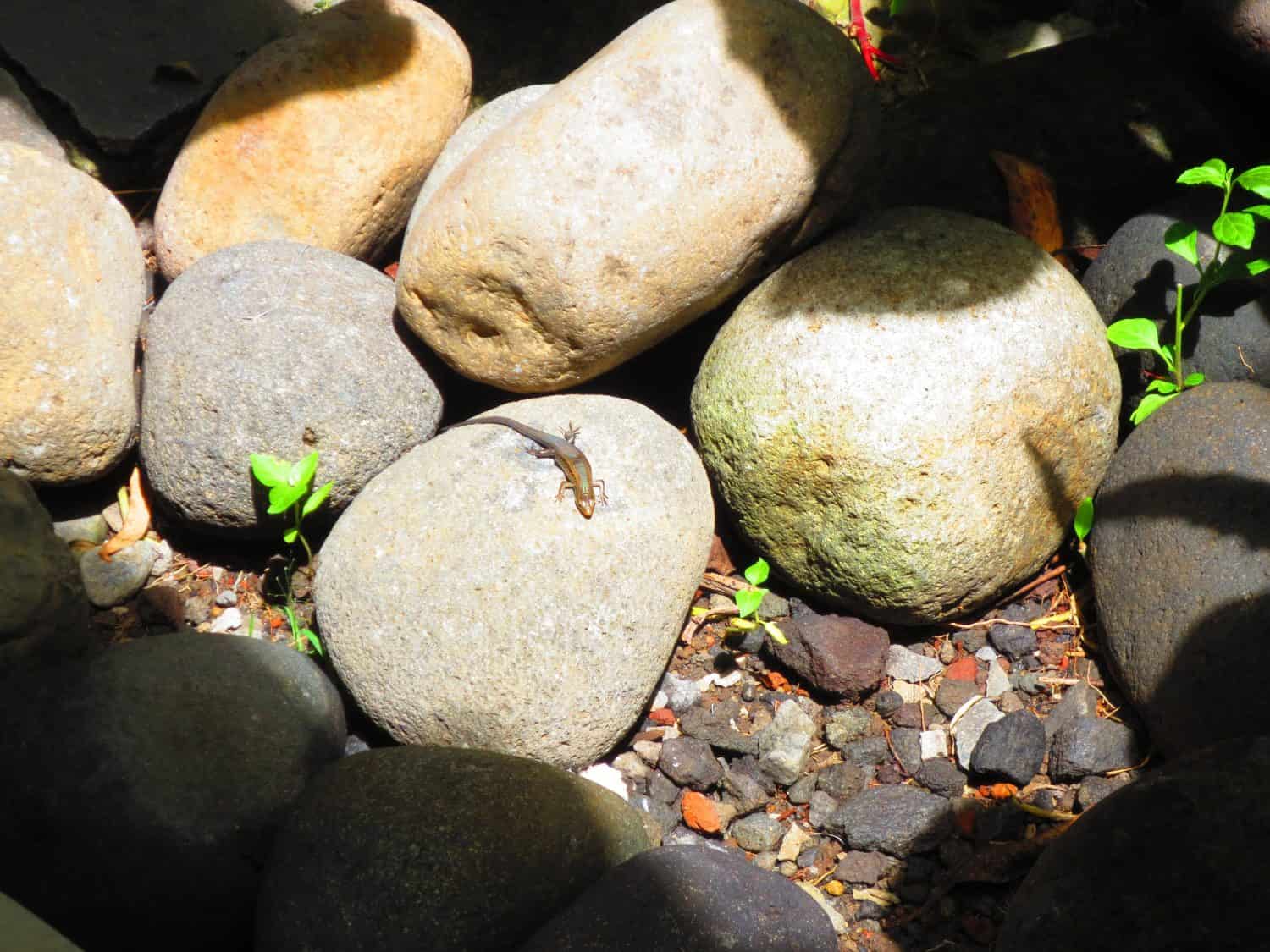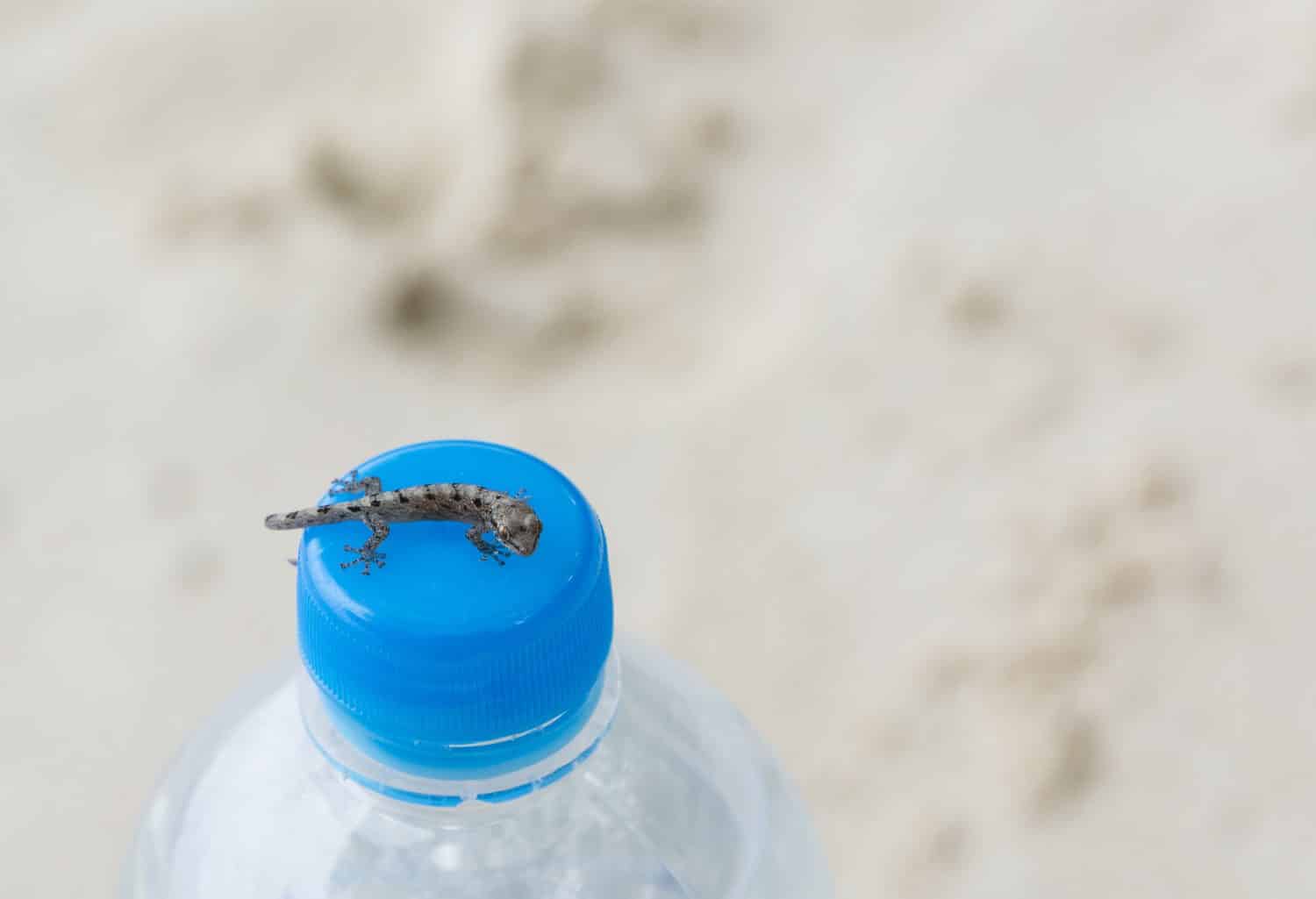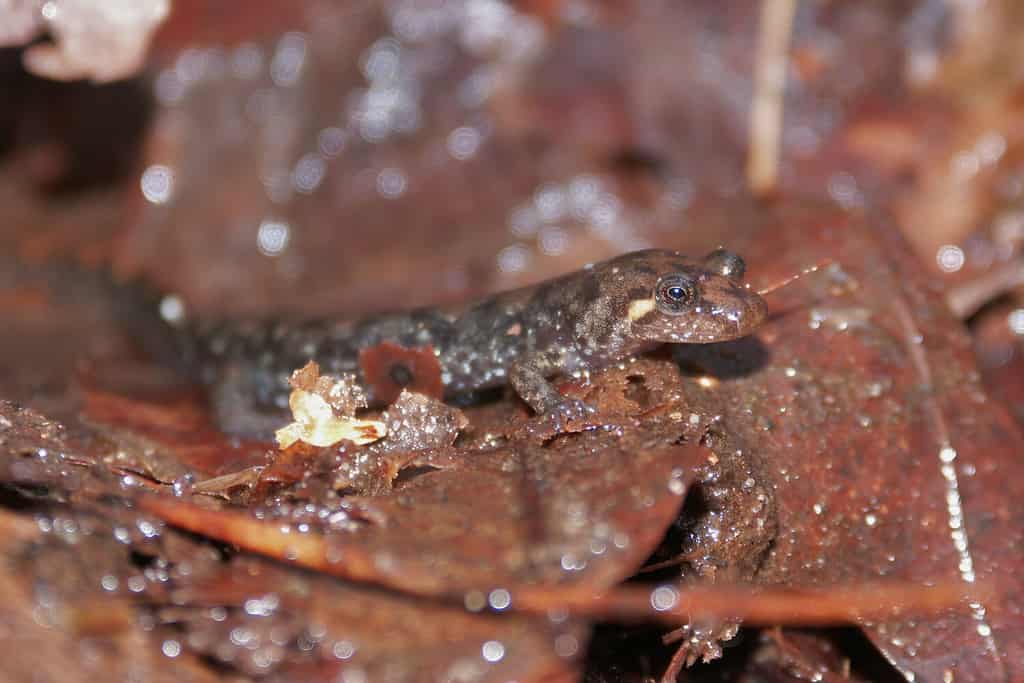When you think of baby animals, a salamander is likely not your first thought. However, baby salamanders are fascinating—as well as downright adorable in their own way. Below, discover X baby salamander facts, all while exploring several pictures of these tiny amphibians.
Baby Salamanders are Similar to Baby Frogs!

A baby salamander is known as an eft, and they are similar to tadpoles!
©Valmedia/Shutterstock.com
When they are first born, baby salamanders are called efts. This is their larval stage. When a salamander is an eft, they live in water before moving to land. They also don’t have legs at this stage. Because of these facts, baby salamanders are quite similar to tadpoles!
Some Salamanders Lay Hundreds of Eggs. Others Lay None!

When a salamander first emerges from its egg, it has no legs.
©Michael Benard/Shutterstock.com
There are two main types of salamanders that give birth to live offspring. This includes the fire salamander (Salamandra salamandra) and the alpine salamander (Salamandra atra). In both of these species, fertilization of the eggs occurs internally. The eggs develop inside the female, and then, just as it is time for them to hatch, she delivers the young live directly into the water. As a result, while they aren’t mammals, they lay no eggs.
On the other side of the spectrum, other species of salamanders may lay hundreds of eggs. While many tend to lay only between 200 to 400 eggs, some salamanders may lay as many as 450 eggs!
Typically, salamander eggs are laid in a thick, jelly-like substance. This is similar to frogs. The coating helps keep the eggs moisturized. Salamanders may also lay their eggs directly into water.
Certain species of salamanders may grow to be nearly 6 feet long.

Some of the largest species of salamanders are over 5 feet long, although they start quite small!
©Sheila Fitzgerald/Shutterstock.com
Because there are so many different species of salamanders, they can come in a variety of shapes and sizes. As a result, some salamanders may be extremely small, while others measure up to a size greater than that of many people.
The most common salamander in North America is the tiger salamander. This little specimen only grows to be around 4 to 6 inches on average. The largest salamander is the Chinese giant salamander (Andrias davidianus). Along with being the largest salamander, they are among one of the heaviest amphibians in the world. Adults of this species can grow to be up to 5.9 feet in length, with a weight of 130 pounds. That’s around the same weight as a newborn giraffe!
There are over 600 different species of salamander.

North America houses around 33 percent of the total salamander species.
©garwopadmi/Shutterstock.com
There are ten living salamander families, all united under the order Urodela. Among all ten of these families, there are over 600 known species of salamander.
Of all the different species of salamander in the world, around a third are located in North America. Eastern North America, specifically the Appalachian Mountain region, has the highest level of salamander diversity. Globally, the northern hemisphere has the most species.
Salamanders can breathe through their skin.

Even the smallest of salamanders can breathe through their skin. This makes them sensitive to their environment.
©IndustryAndTravel/Shutterstock.com
Cutaneous respiration, or breathing through the skin, is common in many types of amphibians. This includes frogs as well as salamanders. However, in many species, cutaneous respiration is often paired with gills or lungs. This is because it can be difficult to garner enough oxygen through the skin in order to support biological functions. Despite this, there are species of salamanders that rely solely on breathing through their skin.
Take the lungless salamander, for example. This species has neither lungs nor gills. As a result, all of their oxygen absorption occurs through their skin. Because of this, however, salamanders can be more sensitive to environmental impurities.
Some salamanders can regenerate injured body parts.

If needed, most salamanders can slowly regenerate parts of their bodies.
©HWall/Shutterstock.com
According to research, it is likely all salamanders possess the ability to regenerate body parts after injury. However, the exact specifications of regeneration may vary. This means that they may be able to restore everything from injured tails and limbs to organs.
It’s important to note that this regeneration isn’t instantaneous, however. Additional studies have shown that it may take certain species of salamanders up to a year to restore a body part. Various factors impact this interesting regeneration ability as well. For instance, the older a salamander is, the slower and less efficiently they are able to regenerate parts of their body.
Salamanders once roamed with dinosaurs.

Some salamander species are thought to be millions of years old.
©HWall/Shutterstock.com
When you think about species that roamed the Earth alongside dinosaurs, you likely think about reptiles. This includes those such as crocodiles or alligators. However, while it is true that many of the reptiles you know and love today have been around since the time of dinosaurs, they’re not alone. Other species, including many salamanders, have also spent their fair amount of time on the planet.
One salamander species, for example, was found to have lived as long as 168 million years ago!
The photo featured at the top of this post is © Michael Benard/Shutterstock.com
Thank you for reading! Have some feedback for us? Contact the AZ Animals editorial team.






